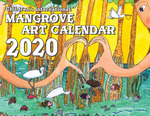FEATURE Report on ASC Violations of its Own Shrimp Standards
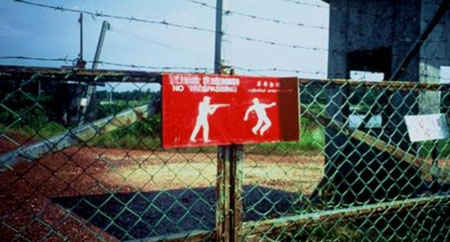
GLOBAL – Giant shrimp, or Scampi, as they are called in Sweden, were first seen in Swedish stores in the early 1990s. The Swedish Society for Nature Conservation's (SSNC) partners in Asia and Latin America brought our attention to devastation caused by export-oriented tropical shrimp farming — people lose their means of sustenance in the devastated mangrove forests; they lose the protection of mangroves against storms and tsunami; local fish stocks and biodiversity is depleted; jobs are lost; the local economy becomes one-dimensional, dependent upon shrimp production for export. Numerous academic studies and news reports over the previous thirty years show that in addition to and as a consequence of environmental and economic losses, the industry precipitates conflicts between local populations and shrimp farmers. READ MORE GLOBAL Trees. A solution to the climate crisis
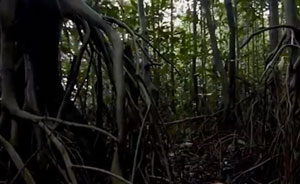
Environmental activists Greta Thunberg and George Monbiot have helped produce a short film highlighting the need to protect, restore and use nature to tackle the climate crisis. Living ecosystems like forests, mangroves, swamps and seabeds can pull enormous quantities of carbon from the air and store them safely, but natural climate solutions currently receive only 2% of the funding spent on cutting emissions. The film’s director, Tom Mustill of Gripping Films, said: 'We tried to make the film have the tiniest environmental impact possible. We took trains to Sweden to interview Greta, charged our hybrid car at George’s house, used green energy to power the edit and recycled archive footage rather than shooting new.' View Video Testing Shrimp for Superbugs
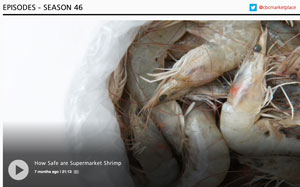
GLOBAL – How safe are supermarket shrimp? We test imported shrimp bought from supermarket chains across the country. While it's expected we'll find bacteria on raw shrimp, how many of those common bugs are resistant to antibiotics? Experts claim antibiotic resistance poses the biggest threat to modern medicine in the 21st century, so is the government doing enough to stop these superbugs from ending up in our kitchens? Antimicrobial resistance (AMR), the ability of microorganisms to render human and veterinary medicines ineffective over time, is becoming one of the world’s biggest public health challenges. This has prompted a call to action for stewardship of antibiotic use in human health care and animal agriculture to reduce unnecessary use and extend the lifespan of these drugs. The Global Aquaculture Alliance fully supports these efforts through a range of programs. VIEW VIDEO AFRICA Mangrove ecosystems will be reinforced in seven West African countries
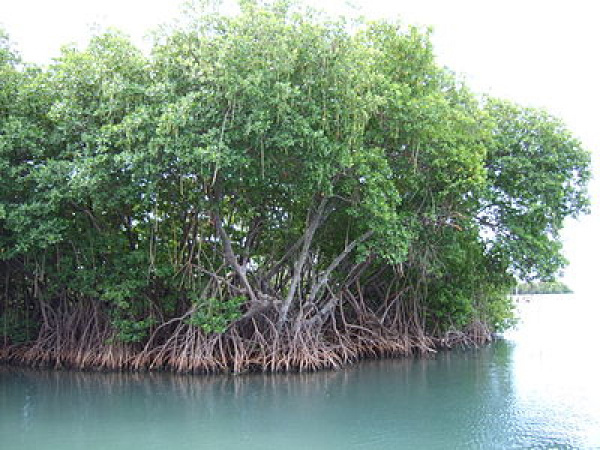
TOGO – Seven West African countries (Senegal, Gambia, Guinea Conakry, Sierra Leone, Liberia, Ghana, Benin, and Togo) will benefit from a XOF6 billion project to reinforce mangrove ecosystems. According to Agence de Presse Sénégalaise which disclosed the information, the regional project was launched at the end of last week by the EU representation in Senegal. This is a 4-year project that will be executed by the International Union for the Conservation of Nature (IUCN) and Wetlands International, an NGO that restores humid zones. These two actors will support civil society organizations engaged in the preservation of mangroves (especially in relation to the green economy and participative governance) in the seven above-mentioned countries. The European Union is fully committed to fostering the fight against climate change on all fronts, said Irène Mingasson, EU ambassador in Senegal. The new project was launched during the European week of climate diplomacy. In Togo, the event was marked by the provision of a XOF20 million financing to Africa Global Recycling for its "Moi jeu tri project". VIEW SOURCE AMERICAS Mystery oil spills impacting mangroves & coral on over 130 Brazilian beaches

BRAZIL – The source of large blots of oil staining more than 130 beaches in northeastern Brazil remained a mystery Tuesday despite President Jair Bolsonaro’s assertions they came from outside the country and were possibly the work of criminals. Tamar, a group dedicated to the protection of sea turtles, said the oil spills were “the worst environmental tragedy” it has encountered since its formation in 1980. The patches of oil began appearing in early September and have now turned up along a 2,000 kilometer (1,200 mile) stretch of Atlantic coastline. “We are not in the presence of a constant leak. If it is the result of a shipwrecked oil tanker, the leaks will continue for the moment,” Bolsonaro told a news conference in Brasilia. “It appears to be criminal. This oil could have been dumped at sea.” The patches of oil have been detected in all nine states of northeastern Brazil, a poor region known for the beauty of its beaches and whose economy depends on tourism. “The coastal ecosystem of northeastern Brazil is very fragile, with mangroves, rocky coves and coral reefs,” Maria Christina Araujo, an oceanographer at Federal University of Rio Grande do Norte, told AFP.READ MORE Florida mangroves reveal complex relationship between climate and natural systems

U.S.A. – In the 1980s, a series of freezes caused the most recent major die-off of Floridian mangroves (and citrus crops, which also fare poorly in cold weather). Since then, previous research showed, mangroves have flourished and expanded further from the tropics. As global temperatures continue rising, noting where mangroves and similar trees and vegetation flourish can serve as a marker to monitor the effects of climate change. A new study led by UCLA’s Kyle Cavanaugh of how Florida’s mangroves and salt marshes are affected by changes in climate, both man-made and natural, illustrates the complex interplay between our changing climate and living natural systems. The paper, which was published in PNAS, found that decades-long, natural climate cycles have determined the northern extent of Florida mangroves for at least the past 250 years. Freeze events that took place approximately every 10 to 30 years caused die-offs, during which mangroves were replaced by salt marshes until warmer trends spurred regrowth. “We didn’t find evidence that climate change has altered this system to date,” said Cavanaugh, who is an assistant professor of geography and member of the UCLA Institute of the Environment and Sustainability. “But then we used climate model projections to look to the year 2100, and those suggest future warming will increase mangrove suitability.” READ MORE An Environmental Artist Wants You To Plant Mangroves In Your Backyard. Here's Why.

U.S.A. – South Florida artist Xavier Cortada is very concerned about sea-level rise and needs your help. For more than 15 years, Cortada has been painting colorful murals of mangroves all over Miami-Dade County to raise awareness about the threat of climate change to South Florida. There's the Miami Mangrove Forest located in downtown Miami on the Interstate-95 underpass and the Reclamation Project located on store fronts of Lincoln Road on Miami Beach. In his newest project, “Plan(T)” Cortada is once again mixing his artistic talent and the science of mangroves by providing free, saltwater-tolerant mangrove seedlings to residents across the county to plant in their backyards. He thinks these mangroves are the first step to protecting the environment from saltwater intrusion. Cortada sat down with Sundial host Luis Hernandez to talk about how he is teaching about the changes in the environment to other South Florida residents and motivating them to get involved in sustainability efforts. Here are some highlights: READ MORE ASIA Global Cimate Strike sparks action across Maldives

MALDIVES – Several climate protests were staged across Maldives recently as part of the Global Climate Strike. Citizens from the southernmost atoll of Addu commenced their protest at 0745 hrs with the participation of Junior Chamber International (JCI) Addu and Addu Nature Park. Before the event concluded at 1000 hrs, Addu's Deputy Mayor Mohamed Yasrif and Councillor Jamsheedha Mohamed briefly visited the strike along with some council staff. In Kulhudhufushi, Haa Dhaal Atoll, a strike began at 1000 hrs in front of the premises of the island council. The protestors called for immediate implementation of measures to protect the island's mangrove. Over 16 hectares of the prized wetland were reclaimed for a controversial airport development project. Following the strike, protesters held discussions with the Kulhudhuffushi Council concerning their demands.READ MORE In the rice-rich Mekong region, will husk briquettes take hold?

MYANMAR – A study released in May 2019 found that energy potential from “major” biomass sources in Myanmar, including fuelwood, reached just over 17 million tons of oil equivalent in 2017. The authors also found that the biomass potential for the country could be as much as 50 percent more than projected energy outputs between 2015 and this year. While the potential for growth exists in Myanmar, the report found that the country needs to “develop more innovative solutions to the constraints and opportunities of biomass energy of the country,” as well as engaging the public and private sectors, investing more in research, and involving local leaders more. Co-author Maw Maw Tun, a researcher from the Department of Mechanical Engineering at Myanmar’s Government Technical Institute, told Mongabay that fuelwood biomass is still the popular choice for most people. “People will still need to be incentivized toward non-forest related biomass, because biomass market for non-forest related biomass is only at an emerging stage in Myanmar,” he said. “And biomass project developers could not afford their own investment without subsidies and incentives from the government due to costly and less profitable kind of investments compared to others.” READ MORE Sulaman’s mangroves

INDONESIA – The Technical Planning and Implementation Committee (JTPP) has organised Mangrove Tree Planting Programme on the national shoreline at Sulaman Wetland Sanctuary. The conservation programme aims to introduce the importance of the mangrove trees as a protection against the waves and prevents sand erosion to the local community. It involves the planting of 1300 seeds from five mangrove species, the highest record for one planting session in 2019 for the Sustainable Forest Management License (SFMLA) Borneo Sulaman Cove license area. Among the participants were Chief Forest Conservator, Director General of the Forestry Department of Peninsular Malaysia, State Directors, government agencies, non-governmental organisation (NGO) and 23 primary school students for purpose of environmental education and care. Tasik Sulaman Mangrove Forest was gazetted as a Class V mangrove forest, managed by the Sabah Forestry Department. In 2007, part of the management of the Forest Reserve was granted to Borneo Sulaman Cove Sdn.Bhd as a Forest Management Unit (FMU) for 50 years, under the SFMLA 02/2007. The Forest Reserve is located in the Tuaran, covering 488 hectares comprising mangrove forests, Coastal Forest and large degraded areas that have been grown by non-native plants. Activities in the forest are limited to conservation, education and eco-tourism and known as Wetland Sanctuary (SWS). READ MORE Commonwealth action group on mangroves meets in Sri Lanka

SRI LANKA – Commonwealth countries are meeting this week in Negombo, Sri Lanka to decide on a work plan to help save the world’s mangroves. The plan includes joint actions, projects and funding strategies for the short and medium term. The activity is part of the work carried out under the Commonwealth Blue Charter – an agreement by all 53 Commonwealth countries to actively co-operate to solve ocean-related challenges and meet global commitments on sustainable ocean development. The Blue Charter works through voluntary action groups led by ‘champion countries’, who rally around issues such as marine pollution and the sustainable blue economy. Home to over 19,000 hectares of mangroves, Sri Lanka champions the Mangrove Ecosystems and Livelihoods Action Group (MELAG). To date, nine other Commonwealth countries have joined MELAG, including Australia, Bangladesh, Vanuatu, Bahamas, Nigeria, Jamaica, Kenya, United Kingdom, and Trinidad and Tobago. READ MORE OCEANA Die-off of mangroves continues in Gulf of Carpentaria
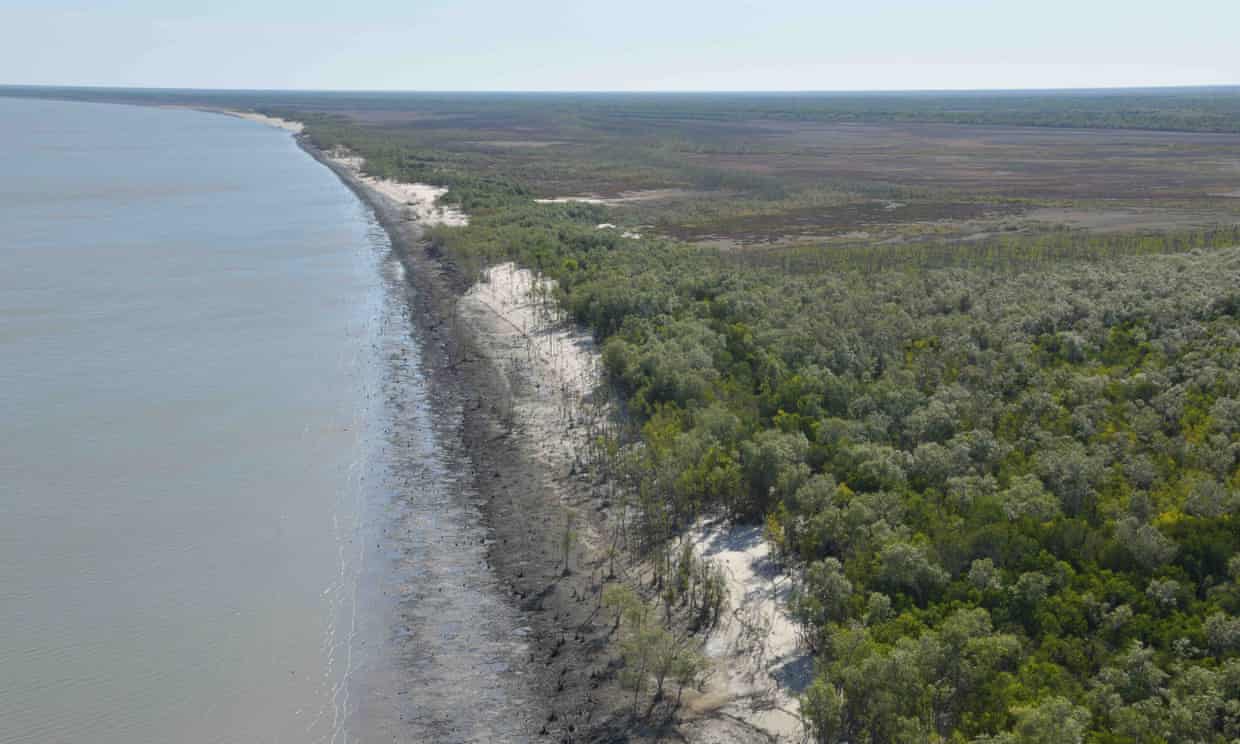
AUSTRALIA – A cascade of impacts including rising sea levels, heatwaves and back-to-back tropical cyclones has created 400km of dead and badly damaged mangroves in the Gulf of Carpentaria, a scientific monitoring trip has discovered. Prof Norman Duke, of James Cook University, spent 10 days monitoring 2,000km of coastline from a helicopter, as well as conducting land-based checks at 32 estuaries along the coastline between Weipa, Queensland, and Cape Barrow in the Northern Territory. In 2015, the remote area suffered what is thought to be the worst mass dieback of mangroves ever recorded. The cause, Duke said, was a combination of extreme heat, a temporary drop in sea level at the time caused by atmospheric pressure, and drought. Duke and colleagues returned for a second follow-up monitoring trip to find devastating impacts of two cyclones had created a 400km stretch of dead and damaged mangroves. Initial reports estimated the area damaged in 2015 to be about 1,000km in length, but Duke says subsequent visits put that number at more like 2,000km. About 8,000 hectares (20,000 acres) of mangroves had been affected. READ MORE Mangrove migration mapped by 'historical detective work'
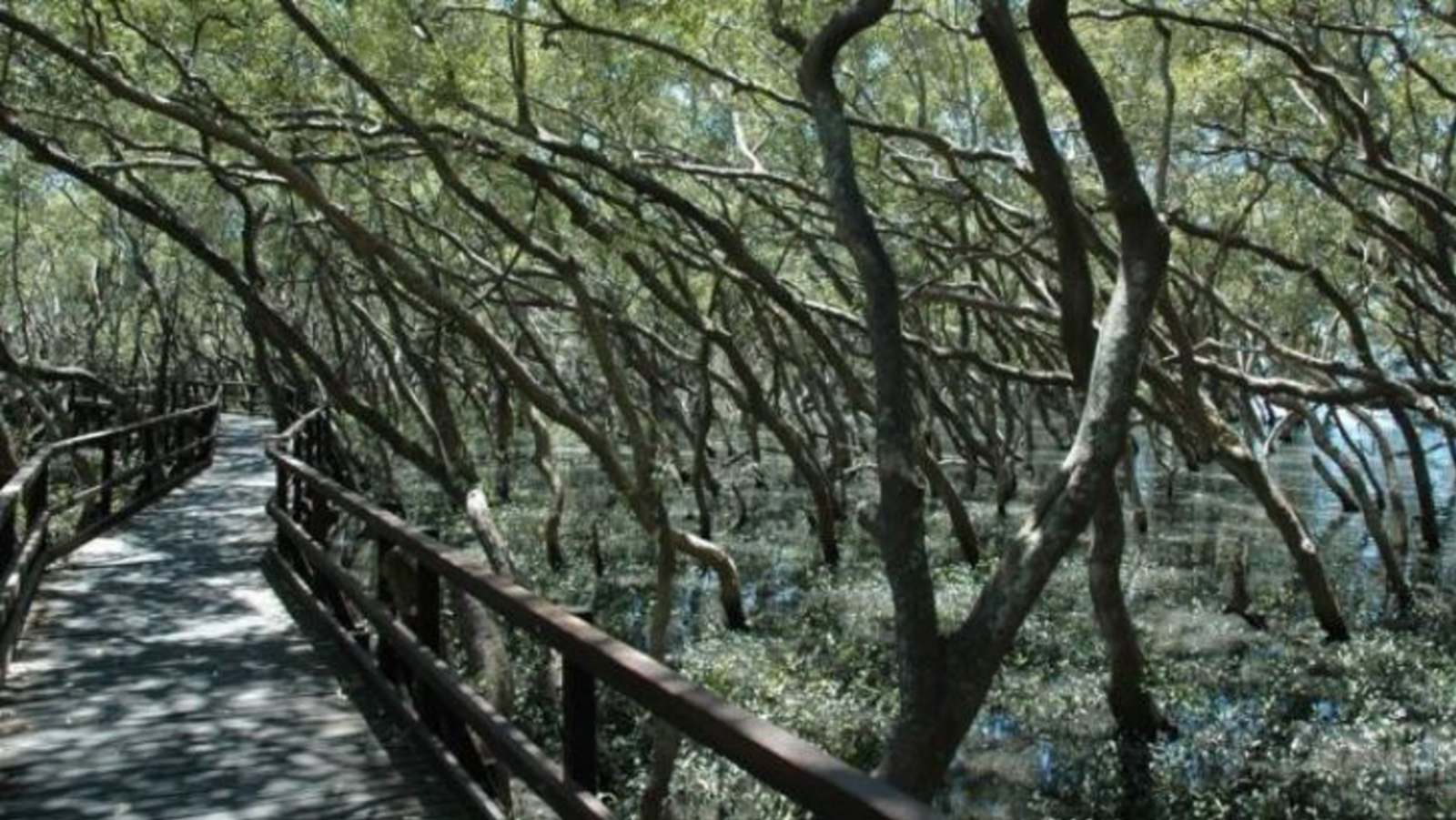
AUSTRALIA – A group of scientists have used historical detective work to piece together how mangroves have migrated towards the Earth’s poles due to steadily increasing temperatures over the past two-and-a-half centuries. The US-based research team focused on mangroves around the coastline of the state of Florida, trying to see whether climate change had impacted on mangrove habitats. Dr Matthew Hayes from Griffith University’s Australian Rivers Institute was part of the team, and said the researchers found there had been a steady poleward migration of mangroves in line with shifts in the climate. “The mangroves are able to move polewards because of the lack of extreme cold events,” Dr Hayes said. To get the data they needed the scientists had to rely on a range of contemporary sources, including personal journals, logbooks, photos and maps from the times in question. “Over the last few hundred years there wasn’t a lot of scientists going through this part of the world looking at mangroves specifically, but what there was was a lot of naturalists, a lot of people in ships keeping logs, and other people travelling and keeping notes of what they saw,” Dr Hayes said.
Like this newsletter?
Pease consider donating to MAP to keep it going.
Giving could never be easier | ACTION ALERTS PETITION – NO new coal power – protect local people and wildlife!
SIGN OUR PETITION PETITION – Help stop the advance of oil palm plantations in Gabon!
SIGN THE PETITION PETITION – Don't trash coral reefs for the cruise industry! – TAKE ACTION PETITION – Sea turtles or condominiums?
Sand mining and construction work would wipe out a marine biodiversity hotspot and destroy the livelihoods of local people, who have not been consulted. Please SIGN! PETITION – Save Penang! Reject the 3-Islands Reclamation!
The lack of public consultation and detailed information about the project is shocking in view of the size of proposed reclamation which is 4,500 acres or 7 square miles
PLEASE SIGN
PETITION – Save Pulau Kukup National Park – second largest mangrove island in the world. Sign The Petition Like this newsletter? Pease consider donating to MAP to keep it going. Giving could never be easier 
69 million tons of carbon stored thanks to mangrove restoration, as demonstrated by the new Mangrove Restoration Map VIEW MAP HERE 
Restoring The Natural Mangrove Forest
Watch movie 
Community Based Ecological Mangrove Restoration in Rufiji Delta VIEW VIDEO Video: Mangroves for the Future – A look bacK. As the latest phase of Mangroves for the Future (MFF) draws to a close, this video highlights some of the project’s most successful initiatives – from local women supporting national park management in Viet Nam to an island in the Maldives that has become a model for waste management, and everything in between. View Here WANT TO GET INVOLVED?
Follow and Join MAP!
   
Like this newsletter? Pease consider donating to MAP to keep it going. Giving could never be easier 

VOLUNTEER OPPORTUNITY 
MANGROVE ISSUES Want to learn more about mangroves?
Our short presentation will give you a better understanding of the issues we are working to solve. WATCH PRESENTATION What is CBEMR? Easy to follow fact sheet – CLICK HERE What is EPIC? – The Ecosystems Protecting Infrastructure and Communities (EPIC) project: the role of ecosystems as protective barriers against climate induced hazards MANGROVES APP AVAILABLE
A pictorial field guide for easy identification of various mangrove species and learning about the mangroves ecosystem. CLICK HERE View MAP’s uploaded Videos at MAPmangrover’sChannel
Question Your Shrimp Consumer/Markets Campaign!
WATCH VIDEO Mangrove Restoration in Asia – Watch Short Video The Value of Mangrove Forests View Video CBEMR Experience Exchange MAP 2017 English Subtitles
VIEW THE VIDEO Mangroves: Guidebook to Malaysia – Click Here
Mangrove rehabilitation in Asia – Local Action and cross-border Transfer of Knowledge for the Conservation of Climate, Forests and Biodiversity VIEW VIDEOS HERE SHARE MAP'S VISION
CLICK HERE to watch short introductory video. Together we can work "at the roots of the sea". Our short documentary, Reducing the Risk of Disaster through Nature-Based Solutions : Mangroves

Exclusive Interview with Alfredo Quarto, Co-Founder and Executive Director of Mangrove Action Project – See more
Marvellous Mangroves Curriculum The Marvellous Mangroves Education Forum is an online hub for those utilizing the Marvellous Mangroves (MM) Curriculum. It gives students, teachers and anyone interested in mangroves, the opportunity to learn and share ideas themed around the curriculum, to connect and communicate with others around the globe whilst exploring mangroves from your computer or on the go. VISIT 
The award-winning Marvellous Mangroves (MM) curriculum educates children on the importance of mangroves and their ecological functions, teaching them about modern challenges and mechanisms for sustainability. VIEW VIDEO Marvellous Mangroves Curriculum in Bangladesh – WATCH VIDEO
MARVELLOUS MANGROVES IN BRAZIL
En Portuges 
Marvellous Mangroves – A Curriculum-Based Teachers Guide. FOR MORE ON MAPs AWARD WINNING CHINA MANGROVE CURRICULUM VISIT

VIMEO SHOW
VISIT OUR "MM" WEBPAGE Check out our presentation for more details on Marvellous Mangroves Read this 10 page history of the development of MAP’s educational curriculum VIEW DOCUMENT
Article in Canada's Green Teacher Magazine – Read More
Like this newsletter? Pease consider donating to MAP to keep it going. Giving could never be easier 
Green Planet Fundraising Assists MAP – LEARN MORE
Volunteer Opportunities with Mangrove Action Project CLICK HERE
"Question Your Shrimp" Campaign Question Your Shrimp- Don't Buy or Sell Imported Tropical Shrimp! Sign the Petition Learn more about the affects of the shrimp industry on mangroves by visiting our blog
Editor’s Note: Mangrove Action Project’s Executive Director, Alfredo Quarto was interviewed about shrimp by Green Acre Radio’s Martha Baskin
LISTEN TO INTERVIEW Sign the Consumer's Pledge to avoid imported shrimp
Not yet a MAP News subscriber?
Click here to subscribe. Note to Our Readers: We strive to keep active links in our newsletter. However, due to circumstances beyond our control, occasionally links to stories may become broken. If you find a link to a story is not functioning, please cut and paste the headline into your browser search bar. In most cases you should be able to locate the original story.
|















